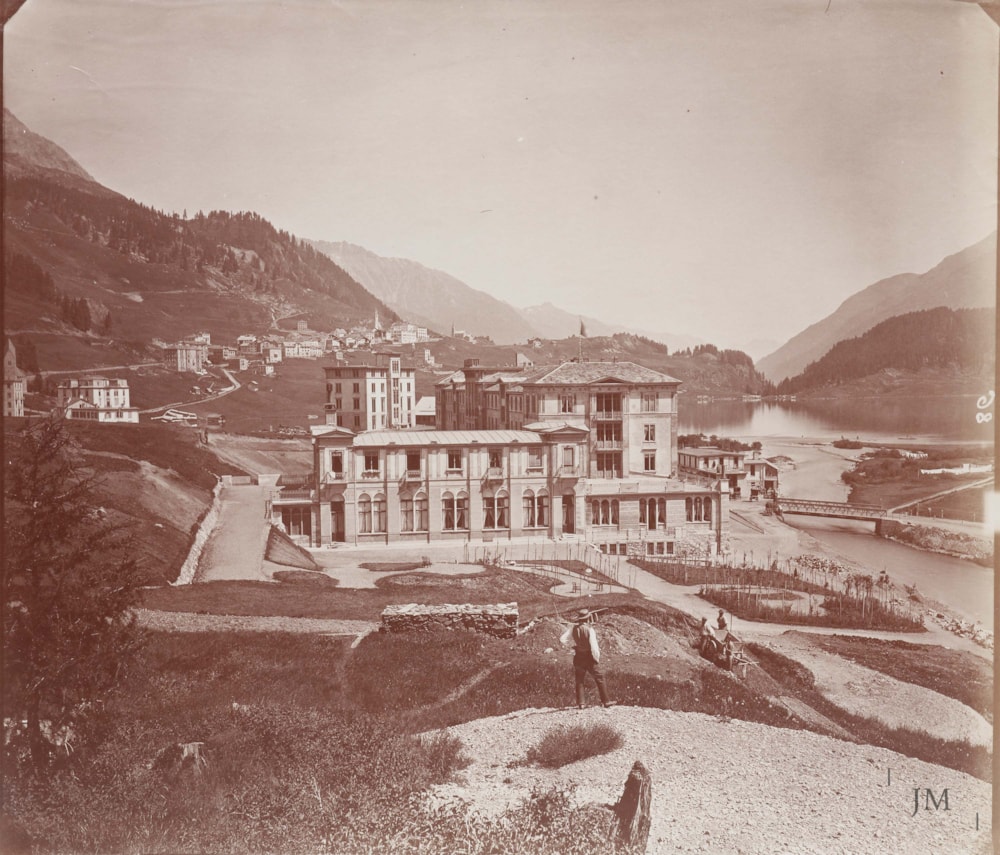Adolphe Braun ( 1812 - 1877 )
St Moritz (3)

St Moritz (3)
albumen print
9½ x 11¾in (24 x 30cm)
circa 1865-1875
Peaks & Glaciers 2021 cat p.45
item sold
Adolphe Braun (1812-1877) and the Maison Braun et Cie.
Adolphe Braun began experimenting with a camera in 1851 and by 1857 had established a fine art publishing firm. Such was its output and commercial success that Braun et Cie. would ultimately eclipse the remarkable contribution that its founder had made to the emerging photographic scene of the mid-nineteenth century. It was only in the mid-1960s that Braun’s photographs and talents as a major innovator in the medium came to be appreciated, and, in particular, the role he played in publicizing the beauty of the Alps through his large-format prints.
Born in Besançon, Braun went to Paris in 1828 to apprentice in decoration and textiles. After a series of failed ventures based on floral design, in 1842 together with his brother, Charles, he published a successful collection of flower patterns. The sudden death of his young wife left Braun with three children to fend for and he returned east to Mulhouse in Alsace to work for the well-known Dollfus-Ausset studio. (The owner of the business, Daniel Dollfus-Ausset was also a keen geologist who became the backer for the Bisson Frères expedition to take the first photograph from the summit of Mont Blanc in July 1861. On the same day as the Ascension artistique or the Première ascension photographique au sommet du Mont Blanc it transpired that Gabriel Loppé first climbed the mountain too).
At the start of the 1850s Braun had begun incorporating photographs of flowers into his designs and his 1855 album, Fleurs photographiées, a collection of 300 photographs, was displayed at that year’s Exposition Universelle in Paris. Thereafter Braun became a professional photographer developing an interest in cityscapes and landscape too. A few years after Braun had commercialized his activities, the studio of Maison Braun et Cie. was operating in a factory-like manner, producing all of its own materials except paper and created thousands of images, often in stereoscopic format, of the French, German, Swiss and Italian Alpine regions. Braun also produced many large-format panoramic images of the Alpine countryside.
In the mid-1860s, Braun invested in a new carbon print method which used a pigmented gelatin within a nitrocellulose plastic solution for the transfer process. Known as the ‘Swan method’, it was developed and patented by the English chemist, Joseph Wilson Swan (1828-1914). The process could produce images of very high quality and in a variety of tints such as sepia, yellow, red and even blue. The photographs were exceptionally resistant to waning and other deterioration in response to concerns about the fading of early types of silver-based prints which was already an issue within a few years of their introduction. The priority became the longevity of the finished product- a hallmark of Maison Braun’s photographs.
Braun also used the new carbon print method to produce photographs of well-known works paintings and sculptures in the Louvre, the Vatican, and Vienna’s Albertina. After his death in 1877, his sons, Gaston and Fernand continued operating Braun et Cie into the 20th century.
Although many of Braun’s Alpine photographs were taken in large format, 40 x 50cm and up to, in rare instances, 100 x 150cm, from the 1860s onwards, the papers used were remarkably thin and delicate. The photographs appear unblemished and smooth with no bumps and imperfections which gives them a timeless appeal to museums and private collectors.
As an Alsatian, equally at home in Germany as well as France, and as a result in the German-speaking parts of Switzerland, Braun’s photographs have an international aspect to them. Some recent exhibitions devoted to Alpine photography in France and Switzerland have also shown that Braun et Cie. relied on enormous amounts of equipment and thereby teamwork to pull off their striking photographs which surpassed any of those taken by their contemporary mountaineers who wielded relatively rudimentary cameras themselves.

